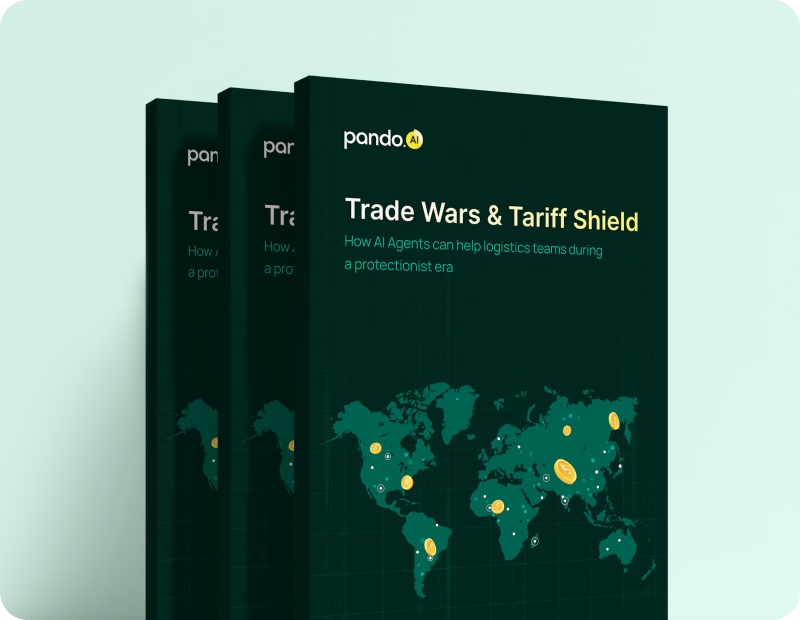-
Products Products
- Industry
- Initiatives
- Resources
- Company
- Book a demo

Before you go: Logistics leaders just dropped the truth on AI
The State of AI in Logistics 2025 is here — no hype, just real conversations and raw insights.
Managing inhouse vs outsourced logistics debate: A strategic perspective for retail industry
Why should retailers take back control to unlock competitive advantage?
Published on July 26, 2024 • 6 mins read
Prakash Ramnath

Why should retailers take back control to unlock competitive advantage?
For decades, outsourcing logistics was the best in the retail sector. Third-party logistics providers (3PLs) promised cost efficiencies, increased economies of scale, and specialized expertise. Eager to focus on core competencies like merchandising and customer experience, retailers have quickly committed to their supply chains. But the tide is changing. Driven by a fundamental need for greater agility, control, and visibility, retailers are increasingly bringing logistics back home.
The outsourcing paradox: Efficiency at a cost
While outsourcing offers undeniable benefits, it also comes with hidden costs and risks:
- Loss of strategic control: In the current highly competitive marketplace, retailers have no control over order fulfillment times, on-time delivery experience, and inventory management – which are some of the important differentiators. A recent study by McKinsey & Company found that over 70% of retailers identified a lack of control over fulfillment as the biggest barrier to achieving their omnichannel goals [Source: McKinsey & Company - The State of Fashion 2023].
- Limited visibility and information silos: Outsourcing often results in fragmented data. Retailers lack real-time insights into inventory levels, shipment status, and potential disruptions, hindering quick decision-making and rapid course correction.
- Scalability challenges for dynamic environments: 3PLs excel at managing steady-state operations, but struggle to adapt to the dynamic nature of retail. The rise of e-commerce and omnichannel fulfillment, with its diverse order profiles and evolving delivery options, reveals the limitations of a one-size-fits-all 3PL approach. To address these scalability challenges, retailers may want to explore options like a Transportation Management System (TMS). A TMS can offer the flexibility and scalability needed to handle fluctuating volumes and changing customer demands, helping you maintain efficiency and responsiveness. For a deeper dive into TMS and its benefits, check out our blog on TMS vs. 3PL.
- Eroding brand identity in the last mile: The last mile delivery is an important determinant of customer satisfaction and brand perception. Retailers who outsource this function lose control over speed, communication, and brand consistency.
- Data security risks: There are significant data security risks associated with third-party handling of sensitive consumer information, especially as huge breaches continue to make news.
The triggers for insourcing: A changing retail landscape
Several key trends are prompting retailers to re-evaluate their logistics strategies:
- The evolving retail landscape: The rise of e-commerce and omnichannel fulfillment have necessitated faster and more adaptive supply chains. Today’s retailers must be able to adapt quickly to changes in consumer attitudes, emerging market patterns, and ever-rising customer demands.
- Inventory optimization and data-driven decisions: Managing inventory across multiple channels becomes crucial for profitability. By internalizing logistic operations, companies can better control stock levels and minimize the chances of out-of-stock or overstock incidents. This will help them take advantage of real-time data for making informed choices about product allocation and promotions and optimizing the available network.
- Building a differentiated customer experience: Delivery speed, accuracy, and transparency are no longer non-negotiables but battlegrounds in retail. Amazon’s same-day and next-day delivery options are now the benchmarks. A McKinsey study found that 90% of US consumers expect two-to-three-day delivery as the baseline. Insourcing allows retailers to tailor their fulfillment operations to deliver a unique and brand-aligned customer experience, fostering loyalty and advocacy.
- Technological advancements: The proliferation of advanced logistics technologies, such as automated warehouses, AI-driven supply chain management systems, and real-time tracking solutions, makes it more feasible for retailers to manage logistics in-house efficiently without requiring them to invest in building large teams in-house.
- Sustainability pressures: With 73% of millennials willing to pay more for sustainable products (Nielsen), retailers need greater control over their supply chain to meet environmental goals.
Value realization: The strategic mandate for insourcing
Insourcing can create vast amounts of value for retailers when it is executed effectively:
- Enhanced agility: In-house control empowers faster decision-making and quicker responses to market shifts and customer demands. It is easier for retailers to test and learn with new fulfillment models or pivot one direction/focus based on consumer behavior trends.
- Improved customer experience: In-house control over the fulfillment process enables retailers to create delivery experiences that are fast, accurate, and aligned with their brand messaging from end to end.
- Increased visibility and data-driven insights: Real-time data on inventory levels, order fulfillment, and delivery performance empowers proactive problem-solving, continuous improvement, and data-driven decision-making across the entire supply chain.
- Long-term cost optimization: While upfront investments are required, insourcing can lead to long-term cost savings through better inventory management, improved operational efficiencies, and reduced reliance on external service providers. By avoiding the markups and fees associated with outsourced logistics, retailers can better manage and potentially reduce their logistics costs in the long run.
Building a successful insourcing strategy: A framework for action
Shifting from outsourcing to insourcing requires careful planning and execution. Here's a roadmap for success:
- Assessment and planning: Before you begin your digitalization journey, match current logistics operations against cost per item shipped as well as performance metrics and identify areas for improvement. Develop a strategic plan with Transition, resources, and timing.
- Technology integration: Acquiring smart logistics management systems is crucial to ensure that the entire supply chain is checked and monitored. This includes warehouse management systems (WMS), transportation management systems (TMS), and integrated ERP solutions.
- Talent acquisition and training: Building an in-house logistics team with the right skills is crucial. This entails recruiting seasoned experts and providing continuous training to ensure the team stays updated with the latest industry practices and technologies.
- Process optimization: Optimize responsiveness and efficiency by redesigning logistics procedures. This entails putting lean management concepts into practice, automating tedious jobs, and using key performance indicators (KPIs) to continuously monitor performance.
- Risk management: Prepare a robust risk management plan to avoid any disruption. This includes establishing contingency plans, diversifying transportation modes, and maintaining buffer stock for critical items.
Real-world success: The Zara model
Spanish fast-fashion retailer Zara provides a compelling case study for the benefits of in-house logistics. By managing its supply chain, Zara can design, produce, and deliver new styles to stores in as little as three weeks. This agility has been a key factor in Zara's success, with the company reporting a net profit of €3.24 billion in 2022 despite global economic challenges.
Bringing logistics in-house presents a compelling opportunity for retailers to gain greater control, enhance agility, and improve customer satisfaction. While the transition requires careful planning and investment, the long-term benefits can significantly outweigh the challenges. By adopting a strategic and methodical approach, retailers can build a robust in-house logistics operation that supports their growth and competitive advantage in the ever-evolving retail landscape.
As we move into an era where the line between digital and physical retail continues to blur, having direct control over the entire supply chain—from sourcing to last-mile delivery—may well become the defining factor between retail success and failure.
The question for today's retail leaders is not whether they can afford to bring logistics in-house, but whether they can afford not to.
Subscribe to Pando blog and Crossroads newsletter now!
Stay up to date with the latest logistics, transportation, and supply chain tips and news.
Subscribe Here!










